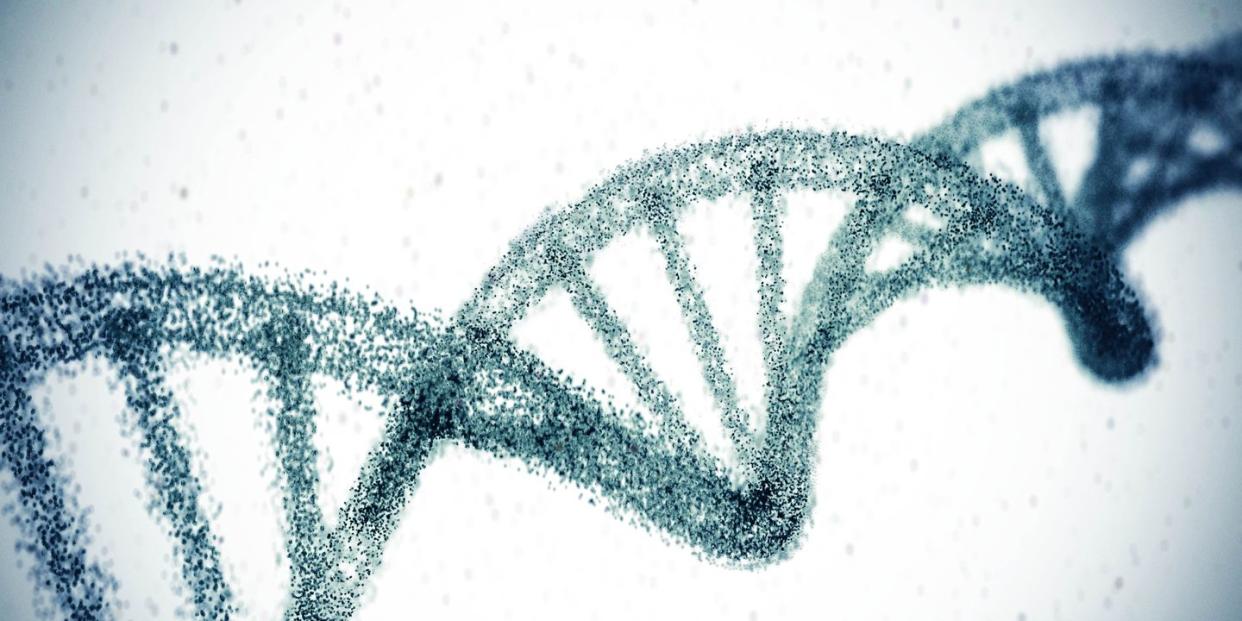Thrilling New Evidence Suggests Earth's Life Came From Space

Researchers just announced the discovery of the nucleobase uracil—one of the building blocks of RNA—in a sample from the asteroid Ryugu.
This isn’t the first time a nucleobase has been discovered in a sample of a space object, but it’s the first time we’ve been able to rule out contamination from Earth as an explanation for its presence.
Scientists look forward to comparing these results to samples from the asteroid Bennu in the near future, which will be returned to Earth by NASA’s OSIRIS-Rex mission.
In late 2020, the spacecraft Hayabusa2 returned to from its mission to near-earth asteroid Ryugu. With it, the craft brought back samples from Ryugu, which are still being analyzed and experimented on to this day.
And just recently, that continued analysis produced an exciting result. A research team led by scientists from Hokkaido University in Japan just announced that they detected uracil in the Ryugu samples—uracil being one of the building blocks of RNA.
This is not the first time a nucleobase—the collection of chemical compounds that makes up DNA and RNA—has been found in an object from space. Researchers have been finding evidence of these compounds in meteorites for years.
However, this particular discovery has one thing others did not—a definite lack of any possible Earth contamination.
“Scientists have previously found nucleobases and vitamins in certain carbon-rich meteorites, but there was always the question of contamination by exposure to the Earth's environment,” Yasuhiro Oba, a researcher from Hokkaido University who led the project, said in a press release. “Since the Hayabusa2 spacecraft collected two samples directly from asteroid Ryugu and delivered them to Earth in sealed capsules, contamination can be ruled out.”
Contamination is always a concern when looking for signs of life on other objects in the universe. Scientists have to be extremely careful to keep their extraterrestrial samples isolated from everything from viruses to human skin cells. If we deposit some of our own organic matter into a sample, it could look like a false positive for evidence of life, or its building blocks, from a non-Earth object.
But because contamination was so carefully avoided in the collection of the Ryugu samples, the scientists can be sure that their 6-to-32-parts-per-billion uracil detection came directly from the the asteroid itself. “Other biological molecules were found in the sample as well,” added Oba in the release, “including a selection of amino acids, amines and carboxylic acids, which are found in proteins and metabolism, respectively.”
The team considers these findings to be evidence in favor of the long-time theory that the basic components of life might have originated elsewhere in the universe and been brought here on the backs of objects like meteorites. This is not quite suggesting we came from aliens, but according to the team, there’s every chance that the foundational components of life formed elsewhere and came together to make life as we know it after they arrived on Earth.
“The discovery of uracil in the samples from Ryugu lends strength to current theories regarding the source of nucleobases in the early Earth,” Oba said in the news release. And looking forward, the team is excited by the prospect of receiving samples from a different asteroid, known as Bennu. “The OSIRIS-REx mission by NASA will be returning samples from asteroid Bennu this year, and a comparative study of the composition of these asteroids will provide further data to build on these theories.”
Maybe we’ll finally learn how life really came to be.
You Might Also Like


